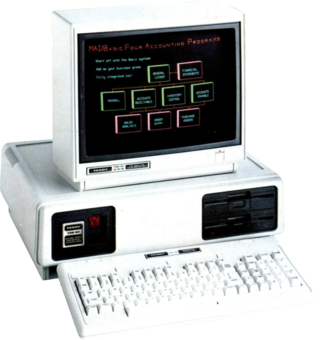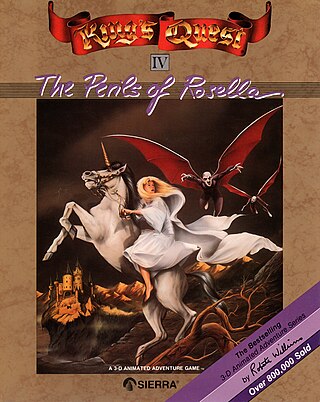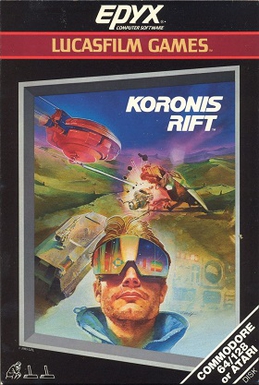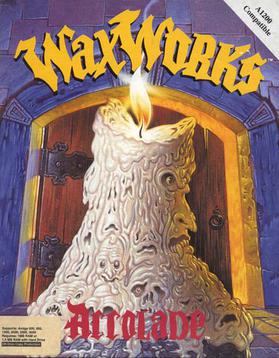
The TRS-80 Micro Computer System is a desktop microcomputer developed by American company Tandy Corporation and was sold through their Radio Shack stores. Launched in 1977, it is one of the earliest mass-produced and mass-marketed retail home computers. The name is an abbreviation of Tandy Radio Shack, Z80 [microprocessor], referring to its Zilog Z80 8-bit microprocessor.

The RadioShack TRS-80 Color Computer, later marketed as the Tandy Color Computer, is a series of home computers developed and sold by Tandy Corporation. Despite sharing a name with the earlier TRS-80, the Color Computer is a completely different system and a radical departure in design based on the Motorola 6809E processor rather than the Zilog Z80 of earlier models.

The Tandy 1000 was the first in a series of IBM PC compatible home computers produced by the Tandy Corporation, sold through its Radio Shack and Radio Shack Computer Center stores. Introduced in 1984, the Tandy 1000 line was designed to offer affordable yet capable systems for home computing and education. Tandy-specific features, such as enhanced graphics, sound, and a built-in joystick port, made the computers particularly attractive for home use.

Deluxe Paint, often referred to as DPaint, is a bitmap graphics editor created by Dan Silva for Electronic Arts and published for the then-new Amiga 1000 in November 1985. A series of updated versions followed, some of which were ported to other platforms. An MS-DOS release with support for the 256 color VGA standard became popular for creating pixel graphics in video games in the 1990s.

The Tandy 2000 is a personal computer introduced by Radio Shack in September 1983 based on the 8 MHz Intel 80186 microprocessor running MS-DOS. By comparison, the IBM PC XT used the older 4.77 MHz Intel 8088 processor, and the IBM PC/AT would later use the newer 6 MHz Intel 80286. Due to the 16-bit data bus and more efficient instruction decoding of the 80186, the Tandy 2000 ran significantly faster than other PC compatibles, and slightly faster than the PC AT. The Tandy 2000 was the company's first computer built around an Intel x86 series microprocessor; previous models used the Zilog Z80 and Motorola 6809 CPUs.

The Color Graphics Adapter (CGA), originally also called the Color/Graphics Adapter or IBM Color/Graphics Monitor Adapter, introduced in 1981, was IBM's first color graphics card for the IBM PC and established a de facto computer display standard.
The Adventure Game Interpreter (AGI) is a game engine developed by Sierra On-Line. The company originally developed the engine for King's Quest (1984), an adventure game that Sierra and IBM wished to market in order to attract consumers to IBM's lower-cost home computer, the IBM PCjr.

Conquests of the Longbow: The Legend of Robin Hood is a graphic adventure game designed by Christy Marx and published by Sierra On-Line in 1991. It is the second and final part of the Conquests series, which begins with Conquests of Camelot: The Search for the Grail. It features VGA graphics and Sierra's standard icon-driven interface first seen in King's Quest V.

Target Games was a Swedish publisher of role-playing games active from 1980 until the year 1999 when they went into bankruptcy proceedings. Until the mid-1990s they published their Swedish roleplaying games under the brand name Äventyrsspel.

King's Quest: Quest for the Crown is an adventure game developed by Sierra On-Line and published originally for the IBM PCjr in 1984 and later for several other systems between 1984 and 1989. The game was originally titled King's Quest; the subtitle was added to the games box art in the 1987 re-release, but did not appear in the game.

King's Quest IV: The Perils of Rosella is a graphic adventure game developed by Sierra On-Line for the MS-DOS, Amiga, Apple II, Apple IIGS, and Atari ST computers and released in 1988. The player takes on the role of Princess Rosella, daughter of King Graham of Daventry and the twin sister of Gwydion/Alexander, who must save her father and a good fairy and destroy an evil witch. Critically acclaimed, it was one of the first games for IBM PC compatibles to support a sound card.

King's Quest V: Absence Makes the Heart Go Yonder! is a 1990 graphic adventure game by Sierra On-Line. Originally released in November 1990, it featured a significant improvement in graphics. It was also the first King's Quest installment to replace the typing user interface with a point-and-click user interface. The title is a spoof on the proverb "Absence makes the heart grow fonder".

The Plantronics Colorplus is a graphics card for IBM PC computers, first sold in 1982. It implements a superset of the then-current CGA standard, using the same monitor standard and providing the same pixel resolutions. It was produced by Frederick Electronics, a subsidiary of Plantronics since 1968, and sold by Plantronics' Enhanced Graphics Products division.

Koronis Rift is a video game from Lucasfilm Games, produced and designed by Noah Falstein. Originally developed for the Atari 8-bit computers and the Commodore 64, Koronis Rift was published in 1984. It was ported to the Amstrad CPC, Apple II, MSX2, Tandy Color Computer 3, and ZX Spectrum.

The Dallas Quest is a graphic adventure game based on the television soap opera Dallas. The game was programmed by James Garon for the TRS-80 Color Computer and published by Tandy Corporation in 1984. It was the second game in the "Animated Adventure" series, following The Sands of Egypt, and uses the same split-screen display. Datasoft published versions for the Apple II, Atari 8-bit computers, and Commodore 64 in the same year.

Space Quest: Chapter I – The Sarien Encounter is a graphic adventure game, created by Scott Murphy and Mark Crowe, and released in October 1986 by Sierra On-Line. It is the first game in the Space Quest series, and sees players assume the role of a lowly janitor on a research ship, who becomes involved in stopping an alien race using a new form of technology for evil purposes.

Space Quest IV: Roger Wilco and the Time Rippers is a 1991 graphic adventure game by Sierra On-Line, and the fourth entry in the Space Quest series. The game was released originally on floppy disks in March 1991, and later released on CD-ROM in December 1992 with full speech support; an Atari ST version was announced via Sierra Online's magazine, Sierra News Magazine, but was later canceled. The game sees players assume the role of Roger Wilco, who is thrust into a new adventure across time and space where he must thwart the plans of an old foe that is seeking revenge against him.

Space Quest III: The Pirates of Pestulon is a 1989 graphic adventure game by Sierra On-Line, and the third game in the Space Quest series. Players assume the role of Roger Wilco, a lowly space janitor, who becomes involved in rescuing a pair of computer programmers from a sinister video game company. The game received positive reviews from critics, and contributed further to the series' commercial success for Sierra. A sequel, Space Quest IV, was released in 1991.

Waxworks is a 1992 horror-themed first-person dungeon crawl video game developed by Horror Soft and published by Accolade for Amiga, Macintosh, and DOS. The game consists of the player traversing historically themed dungeons, solving puzzles and fighting enemies, in order to fix a curse that has been placed on the player character's family.

Tandy Graphics Adapter is a computer display standard for the Tandy 1000 series of IBM PC compatibles, which has compatibility with the video subsystem of the IBM PCjr but became a standard in its own right.





















